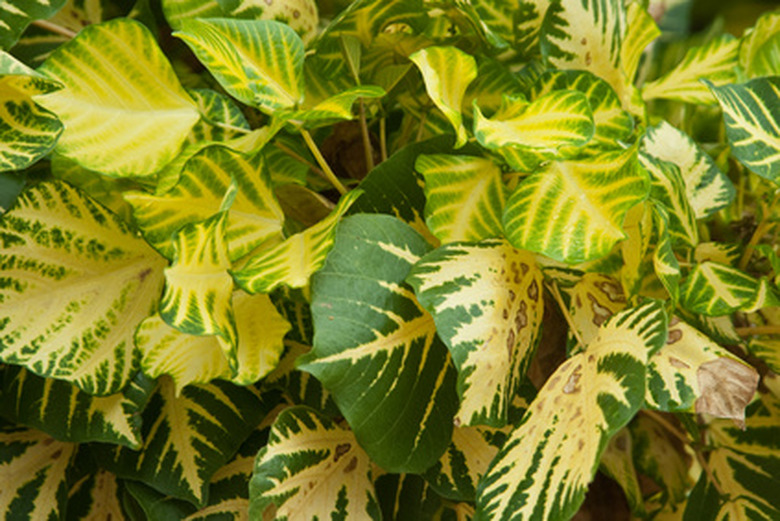Difference Between Vascular Plants & Nonvascular Plants
Vascular plants and nonvascular plants are very different from one another. While they share a few minor overlapping details, the differences are substantial. They have different ways of taking in and distributing water, reproducing and growing. One of the few things they do have in common is the ability to perform photosynthesis.
Description
Most plants have a vascular design. Vascular plants are those which have tubes called xylem or phloem inside of them for the transport of liquid. Plants which have roots, stems and leaves are vascular. Nonvascular plants do not have tubes inside and must move water through them in a different manner. Examples of vascular plants would be trees, vegetable plants, grass and anything with flowers. Nonvascular plants include mosses, liverworts and hornworts.
- Vascular plants and nonvascular plants are very different from one another.
Water
In vascular plants, xylems are the tubes that carry water and other chemicals up through the plant. Phloems are the tubes that carry sugar and other chemicals down through the plant. These work similarly to the arteries and veins in most animals. Nonvascular plants absorb water in much the way a paper towel absorbs spilled water from a countertop. They can also dry out for long periods of time when water is unavailable without actually dying. This is known as desiccation.
Flowers
Vascular plants can produce flowers, though not all do. Flowers are an essential step in the reproductive cycle of most vascular plants. Flowers house the male and female parts of the plant necessary for pollination. Without pollination of the flowers, no fruit or seed can be produced. Nonvascular plants do not rely on this method of reproduction and therefore do not produce flowers.
- In vascular plants, xylems are the tubes that carry water and other chemicals up through the plant.
- Phloems are the tubes that carry sugar and other chemicals down through the plant.
Fruits and Seeds
Following pollination, most vascular plants begin production of fruit. Fruit is merely a word describing a container for seeds and includes everything from apples and peppers to pine cones and peanuts. Very few kinds of vascular plants are seedless. Instead they produce spores for the purpose of regeneration. Nonvascular plants do not produce fruit or generate seeds. They also produce spores for reproduction, which is a complicated process.
Growth
Because vascular plants can carry water upward to supply all the parts of the plant, they can grow to be very tall, depending on the species. As a result of their inability to transport water in an upward direction, nonvascular plants cannot grow tall. Having to absorb their water limits their vertical growth.
- Following pollination, most vascular plants begin production of fruit.
- Because vascular plants can carry water upward to supply all the parts of the plant, they can grow to be very tall, depending on the species.
References
- University of Texas: Nonvascular Plants
- See Comments
